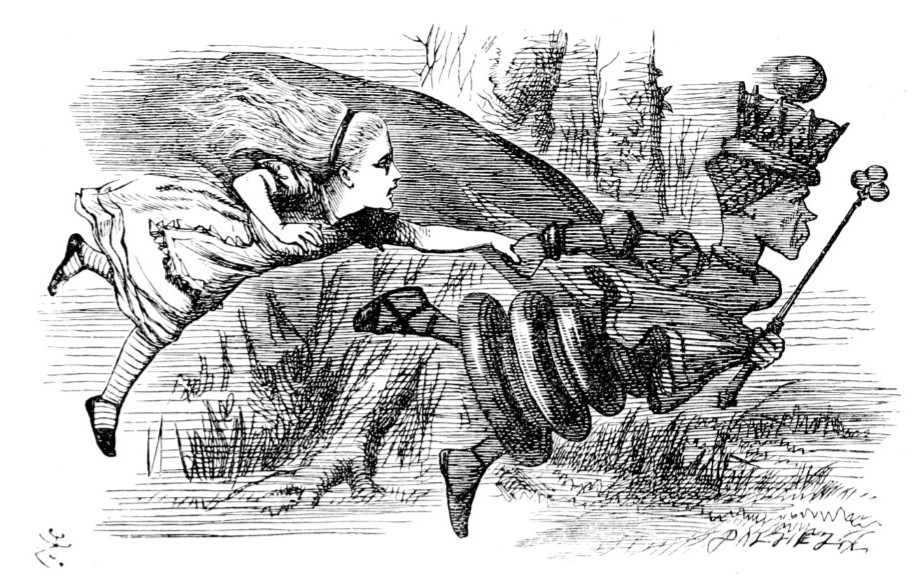“I never considered the Stones drug music. They were the drug itself.” – Patti Smith
All the art that has affected me in any meaningful way has been a psychedelic experience. I don’t mean that it was all drug-induced; I don’t even mean it’s all “hallucinatory.” What I mean is, it has all taken me to unexpected and unfamiliar places, expanded my consciousness, allowed me to view things in a broader or more concentrated fashion. Growing up in the suburbs of Sacramento, I was obsessed with finding new sounds and visions which would bend my mind. Citizen Kane; Bob Dylan’s 1965-66 three-album run of Bringing it All Back Home, Highway 61 Revisited, and Blonde on Blonde; Andy Warhol’s “Death and Disaster” paintings; Animal Farm; the “Penny Lane”/“Strawberry Fields Forever” single; Jasper Johns’ Target with Four Faces; David Bowie’s “Berlin Trilogy” – they have all been milestones in my life.

Lewis Carroll’s two Alice books certainly belong in this company. I’ve read each probably thirty-five or forty times, and keep coming back to them for any number of reasons, not the least of which is their quotability. It seems one can find an applicable Alice line for almost any situation, an indication of on how many levels the books can work. Alice has been viewed as a socio-political satire, a Freudian study, a hallucinogenic binge, a philosophical treatise. That Carroll himself certainly saw it as simply a children’s story is beside the point. I consider them to be tales of the heroine negotiating her way through anarchic, alarming, ridiculous, lonely, confusing, beautiful environments – in short, as metaphors for life. Contrariwise, they also serve as escapes from the same – they are two of the funniest books I’ve ever read. It was Carroll’s intent not that Alice educate, but that it entertain – this was unheard of in Victorian England, when children’s books were meant only to teach and/or moralize. Carroll succeeded brilliantly in much more than making the books entertaining; what he created 150 years ago was magical, something that even he would manage to equal only once more – when he wrote The Hunting of the Snark.
How Alice has affected my work is difficult to pin down. I’ve done a few pieces which explicitly reference the texts, but the real influence has been much more indirect. Oblique communication is a major theme in Alice; in my work, quotation, reference, and transformation – the subjects of which are generally well-cloaked – play important roles. Many years ago, these books irrevocably altered my thought process – they have contributed to not only the painter I am, but also the person.



